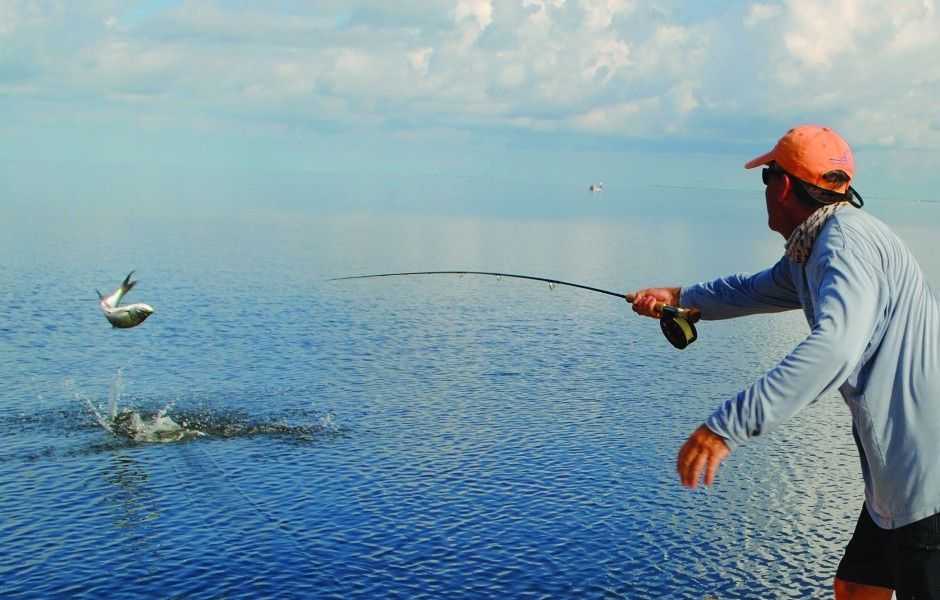
Now that tarpon season is here it’s time to think about your casting distance with a fly. A lot of “experts” will tell you that you need to be able to make at least an 80 foot cast in order to catch anything on the flats. You’ll occasionally read this in magazines and often hear it from many guides. But honestly, the 80 foot cast is a demanding requirement for experienced anglers and a terribly discouraging one for most beginners. In my opinion, it’s simply not necessary.
Most of the tarpon I’ve caught over the years were hooked within 50 feet of my boat, which is a cast anyone can make. Even if you’ve never touched a fly rod before, a decent guide or instructor can get you casting 50 feet within an hour. The trick is to do it quickly and accurately, and this is the part that takes some practice.
In most situations, from the time your guide points out a cruising tarpon to the moment you must start your cast is around 10 seconds. You’ll have the first 5 seconds to spot the target for yourself and the next 5 to get the fly in the water and in front of your fish. This is a really narrow window, but when we’re talking about 50 feet it can easily be done.
Here’s a great exercise to try with your fly rod, especially if you have an empty baseball field nearby and a friend with a stopwatch.
String up your 10-weight with a 1/0 pattern and stand on the pitcher’s mound. The distance to home plate is 60’, which is usually the maximum distance of the average tarpon shot.
Next, strip out 80 feet of fly line from your reel. Leave a rod’s length line hanging from the tip and hold the fly in your opposite hand by the eye of its hook. Have your partner hit the stopwatch and start counting out loud. At the same moment you’ll start your false casts, aiming for the home plate. When the count hits “5,” stop casting and present your fly.
So how close are you to home?
If you realistically want to catch a big tarpon on a fly, in the conditions you’ll likely encounter this time of year, you should be within a foot of the plate. If you’ve actually hit the plate then you‘re ahead of the crowd, but keep practicing.
So what happens if you’ve been flailing away for hours and still can’t get near the plate in those 5 seconds? Then it’s time to stop what you’re doing and get some real instruction. I’ve seen a lot of self-taught anglers who’ve taught themselves some seriously bad habits.
If you’re one of these folks you might be deadly with a fly rod on a trout stream but you’ll seriously struggle on the flats. One hour of being taught proper saltwater techniques, whether it’s on a baseball field or on the deck of a boat, will get you to home plate in no time.